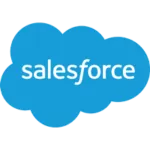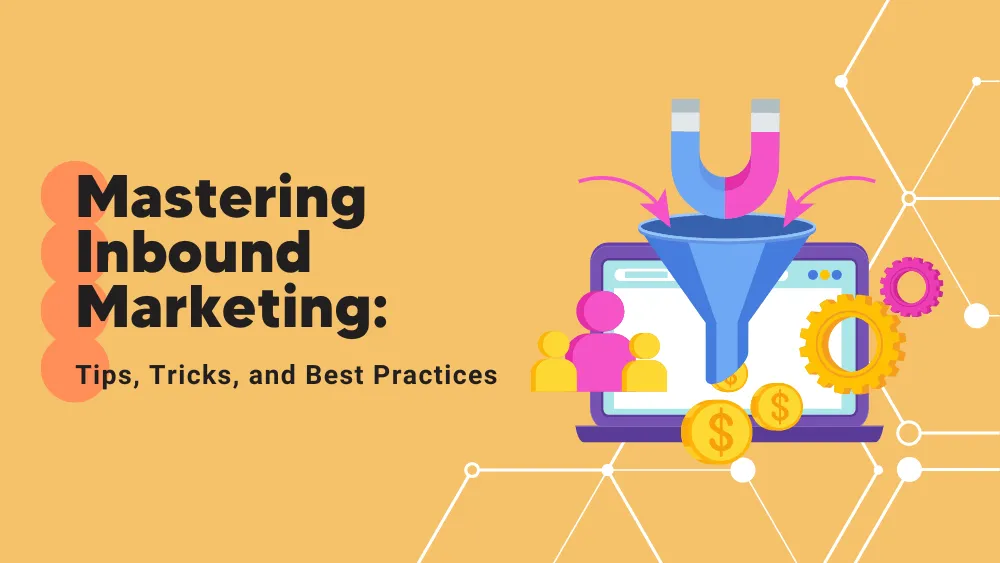Table of Contents
Does your SaaS business need a powerful marketing strategy? If so, you should absolutely consider market segmentation. This article aims to explore the art and advantages of market segmentation in SaaS from different points of view.
What is Market Segmentation?
Market segmentation is the process of dividing a market into distinct groups of customers who have different needs, interests, and behaviors. By identifying and targeting these specific segments, companies can tailor their marketing campaigns and product offerings to meet their customers’ needs. This approach can lead to increased customer satisfaction, stronger customer loyalty, and higher profits.
Types of Market Segmentation
Market segmentation is essential to any successful marketing or digital marketing strategy, and we can highlight various approaches to it.
These types of marketing segmentation aim to group customers based on their similarities, allowing companies to develop targeted marketing messages and product offerings. In this section, we will discuss four different types of market segmentation: geographic, demographic, psychographic, and behavioral segmentation.
-
Geographic segmentation
Geographic segmentation is one of the most straightforward approaches to market segmentation. This method groups customers based on their geographic location, country, region, or city. Companies often use this method to target customers with different needs and preferences based on location. A company that sells winter sports gear might use geographic segmentation to target customers in colder regions with more snowfall.
-
Demographic segmentation
Demographic segmentation is another widely used approach to market segmentation. This system organizes individuals into categories based on attributes like age, gender, salary, educational background, and job. Demographic segmentation is particularly useful when the offered product or service is more relevant to a particular demographic. For example, a company selling baby products might target customers aged 25-35 years who are more likely to have young children.
-
Psychographic segmentation
Psychographic segmentation focuses on customers’ attitudes, values, and lifestyles. This approach categorizes customers based on factors such as personality traits, interests, and beliefs. A company selling organic food products might use psychographic segmentation to target health-conscious customers who value sustainable living.
-
Behavioral segmentation
Behavioral segmentation is a more complex approach to market segmentation that groups customers based on their behavior, such as purchasing habits, product usage, and brand loyalty. Companies use behavioral segmentation to develop personalized marketing messages and product offerings for customers with similar behavior. For instance, a company selling skincare products might use behavioral segmentation to target customers who purchase high-end skincare products and are loyal to a particular brand.
-
Firmographic Segmentation
Firmographic Segmentation, in the end, tends to analyze and segment the market based on the characteristics of the target companies, such as industry, size, revenue, or technology stack. For example, a SAAS company might target small businesses with a limited budget or larger enterprises with more complex IT infrastructure.
Besides, this kind of segmentation helps SAAS companies identify the most promising market segments to focus their efforts on. In fact, by analyzing the revenue of the target companies, SAAS companies can focus on customers who are likely to have more resources available to invest in their products. This can help SAAS companies to maximize their revenue potential and grow their business more effectively.
-
Customer Personas
Another effective way to segment the SaaS market is based on customer personas or user roles. SaaS businesses can identify different user roles or personas within a target market and create tailored solutions that address their unique needs.
By focusing on user roles, SaaS businesses can provide more targeted solutions that address the specific pain points of each user group. This approach can help SaaS businesses improve their product-market fit, increase user engagement, and reduce churn.
As a result, different approaches to market segmentation can help companies develop targeted marketing messages and product offerings for different customer groups. By using geographic, demographic, psychographic, user roles, and behavioral segmentation, companies can understand their customers’ needs and preferences and tailor their marketing efforts accordingly.
Main Advantages of Market Segmentation
Market segmentation has numerous advantages for businesses of all sizes. In this section, we will discuss some of its key benefits.
-
Targeted marketing messages
As mentioned earlier, one of the primary advantages of market segmentation is the ability to develop targeted marketing messages. By dividing customers into groups based on common characteristics, businesses can develop messaging that speaks directly to the needs and desires of each group. This can lead to more effective marketing campaigns and better ROI.
- Better customer experience
Market segmentation can also improve the overall customer experience. By understanding the needs and preferences of each customer group, businesses can develop products and services tailored to their specific needs. This can lead to higher customer satisfaction.
- Increased customer loyalty
When businesses provide a better customer experience, customers are likelier to remain loyal to the brand. Market segmentation allows businesses to understand the unique needs of each customer group and provide personalized experiences that keep customers coming back.
- Improved product development
Market segmentation can also lead to improved product development. By understanding the needs and preferences of different customer groups, businesses can develop products that meet the specific needs of each group. This can lead to higher product adoption rates and increased customer satisfaction.
- Higher profitability
Finally, market segmentation can lead to higher business profitability by developing targeted marketing messages, providing a better customer experience, and improving products.
Best Practices for Market Segmentation
Time to analyze now some of the best practices for market segmentation in SaaS. These include:
-
Data-driven approach
SaaS companies should use a data-driven approach to market segmentation, using customer data to identify patterns and trends that can be used to group customers. This approach involves collecting and analyzing data from various sources, such as customer surveys, user behavior, and demographics. Using data to drive market segmentation, companies can better understand their customers’ needs and preferences and develop tailored marketing messages and product offerings.
-
Continuous monitoring and analysis
Market segmentation is not a one-time process, and SaaS companies should continuously monitor and analyze their customers’ needs and preferences to stay relevant. This process involves regularly collecting and analyzing customer data, including customer feedback and behavior data, to ensure that market segments are up-to-date and accurate by continuously monitoring and analyzing market segments to adapt their marketing strategies to changing customer needs and preferences.
-
Flexibility and adaptation
SaaS companies should be flexible and adaptable when it comes to market segmentation. Customer needs and preferences can change rapidly, and companies need to be able to adjust their marketing strategies accordingly. This means being open to changing market segments and developing new strategies to target different customer groups.
-
Integration with overall marketing strategy
Market segmentation should be integrated into the overall marketing strategy of a SaaS company. Market segments should be aligned with the company’s overall branding, messaging, and product offerings to ensure consistency and cohesiveness. By integrating market segmentation with the overall marketing strategy, SaaS companies can ensure that their marketing efforts are focused and effective.
Case Studies of Market Segmentation
Do you want to know how organizations put market segmentation strategies into full practice? Here are some real-world case studies of SaaS companies that have successfully implemented them in their business.
-
Salesforce
Salesforce is a leading cloud-based customer relationship management (CRM) software provider. The company uses market segmentation to target specific customer segments with tailored marketing messages. For example, Salesforce offers different pricing plans based on the needs of different customer segments, such as small businesses, mid-sized companies, and large enterprises. Additionally, Salesforce uses customer data to develop targeted marketing campaigns for specific industries like healthcare and financial services.
-
HubSpot
HubSpot works in the field of inbound marketing and sales software. The company uses market segmentation to target specific customer segments with tailored marketing messages. For example, HubSpot offers different products and pricing plans based on the needs of different customer segments, such as small businesses, mid-sized companies, and large enterprises. Additionally, HubSpot uses customer data to develop targeted marketing campaigns for specific industries, such as healthcare and financial services.
-
Intercom
Intercom is a provider of customer messaging software. The company uses market segmentation to target specific customer segments, Intercom offers different products and pricing plans based on the needs of different customer segments, such as small businesses, mid-sized companies, and large enterprises. Intercom uses customer data to develop targeted marketing campaigns.
-
Slack
Slack, indeed, is one of the most famous collaboration software. The company uses market segmentation to target specific customer segments with tailored marketing messages. For example, Slack offers different products and pricing plans based on the needs of different customer segments, such as small businesses, mid-sized companies, and large enterprises. Additionally, Slack uses customer data to develop targeted marketing campaigns for specific industries, such as healthcare and financial services.
-
Zoom
Used all over the world, Zoom is a video conferencing software. The company uses market segmentation to target specific customer segments with tailored marketing messages. For example, Zoom offers different products and pricing plans based on the needs of different customer segments, such as small businesses, mid-sized companies, and large enterprises. Additionally, Zoom uses customer data to develop targeted marketing campaigns for specific industries, such as healthcare and financial services.
These case studies show market segmentation’s importance and power in the SaaS industry. Companies prioritizing market segmentation will be better positioned to succeed in the long term by building stronger customer relationships, developing better products, and driving higher profitability.
Conclusions
In conclusion, market segmentation is a critical component of the marketing strategy for SaaS companies. By dividing customers into distinct groups based on common characteristics, businesses can develop targeted marketing messages, provide a better customer experience, increase customer loyalty, improve product development, and increase general profitability.
Effective market segmentation requires a data-driven approach, continuous monitoring and analysis, flexibility and adaptation, and integration with the overall marketing strategy. By implementing these best practices, SaaS companies can better understand their customer’s needs and preferences and develop tailored marketing strategies that deliver better results.
Effective market segmentation is more important than ever in today’s highly competitive market. Therefore, we encourage SaaS companies to use market segmentation in their marketing strategies and adopt effective strategies to maximize their chances of success in the marketplace. By doing so, they can unlock the full potential of their customer base and achieve ongoing growth and success.









